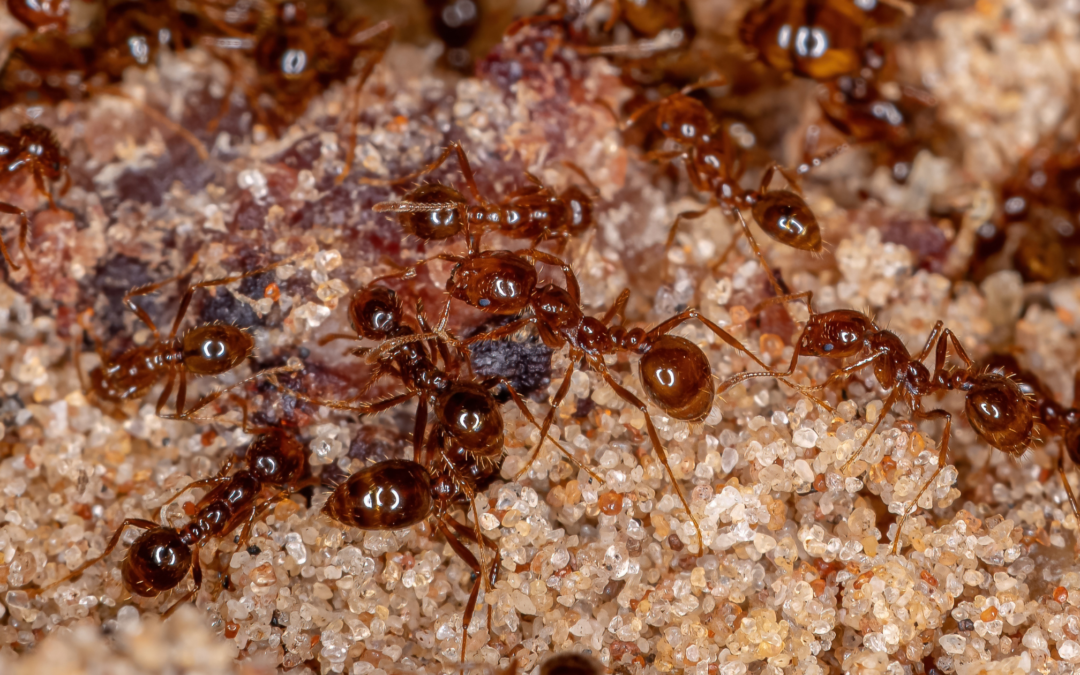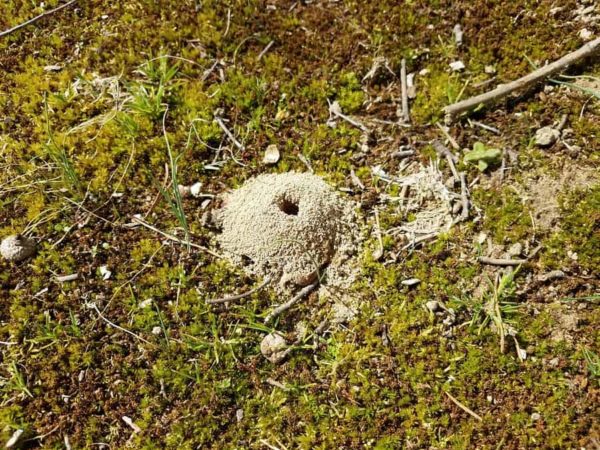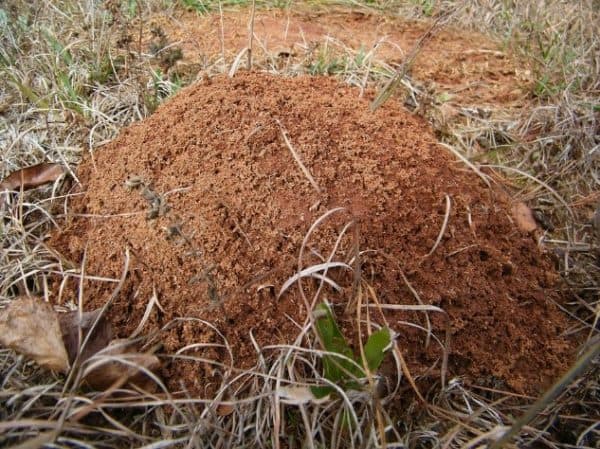READY TO GET STARTED?
REQUEST A FREE ESTIMATE
Fill out the form below or call (888) 466-7849 for a free, no-obligation estimate.

While fire ants are small, they can pack a painful sting! These pests can quickly take over your yard with their unsightly mounds and if threatened they can become aggressive with their painful sting. Let’s review everything you need to know about preventing fire ants and ways you can deter them from your yard.
Fire ants are reddish-brown with a dark abdomen. These ants can vary in size from 1/8 to 1/4 inch. Fire ants will often build their large, dome-shaped mounds in yards. These mounds can reach up to 18 inches in height. They will often build in areas that are open and sunny, such as lawns, pastures, and along roads. Fire ants are known to sting if provoked, causing allergic reactions to some. Fire ants will often enter our homes for a food source, such as fruits, insects, and oils from seeds.
An effective method to prevent fire ants is placing some easy preventative measures throughout your property to deter them in the first place. Consider the following DIY fire ant prevention tips:
If you’ve spotted a fire ant mound in your yard or would like to start preventing them now, the best thing to do is call a professional pest control company near you for help. These experts will provide you with a thorough inspection, treatment plan to remove these pests, and recommendations on how you can prevent them from returning.

Fire ants, with their fiery stings and relentless mounds, can quickly turn your yard into a battleground. For Georgia homeowners, dealing with these aggressive pests is an ongoing challenge. However, with the right strategies and tools, you can regain control of your outdoor space and enjoy it without fear of fire ant attacks. In this guide, we’ll explore the signs of fire ants, the dangers they pose, what to do if you’re bitten, and most importantly, how to effectively eliminate them from your yard.
Identifying a fire ant infestation is crucial for prompt action. Look out for telltale signs such as:
Beyond their painful stings, fire ants pose several risks:
If you or someone else is stung by a fire ant, follow these steps:
Effective fire ant control requires a multi-faceted approach. Here are some strategies to consider:
Once you’ve eradicated fire ants from your yard, take steps to prevent future infestations:
In conclusion, controlling fire ants in your Georgia yard requires diligence and a combination of tactics. By identifying signs of infestation, understanding the dangers they pose, and implementing effective control measures, you can reclaim your outdoor space from these troublesome pests. For fast-acting and reliable fire ant control, trust the expertise of a professional pest control company near you to safeguard your home and family.

If you’ve ever noticed dirt mounds throughout your yard, you might be assuming that they are just ant mounds. But, if you look closer, certain mounds could be home to a completely difference species. Digger bee mounds could easily be confused with ant mounds, but truthfully, the two species couldn’t be more different.

Digger bees are ¼ to ½ inch long, and depending on their species can be dark, shiny metallic, often with yellow, white, or rust-colored markings. What’s unique about digger bees from other bees is they tend to build their nest about 6 inches deep under the ground. The adult female digger bees live in these mounds underground while the male digger bees dig to the surface of the soil creating a pathway for the females to emerge during springtime.
Digger bee mounds can usually be found in areas of your yard where the grass is sparse, such as a dry or shady area. They typically build their nests close together, creating a cluster of several small mounds.

Fire ants can vary in different sizes but have a dark red body color that can range from reddish brown to reddish black, depending on their species. Fire ants do have a stinger and when used can give off a painful sting.
Fire ant mounds are usually raised where you can easily spot them in your yard. The mounds are also dome-shaped and can range from two- to four-square feet in size. Fire ant colonies can be found to have an average of 80,000 worker ants. They typically like to avoid darkness and shade; therefore, they will build their mounds in sunny areas of yards, rather than in shaded areas.
From above, you can see just how different these two species are and how different their habitat is. While digger bees like to build their mounds underground and in shaded areas, the fire ant can be seen building theirs visibly and in sunny areas of the yard. If you believe you have either of these pests in your yard, it’s best to contact a professional pest control company who can help identify and provide treatment plans.